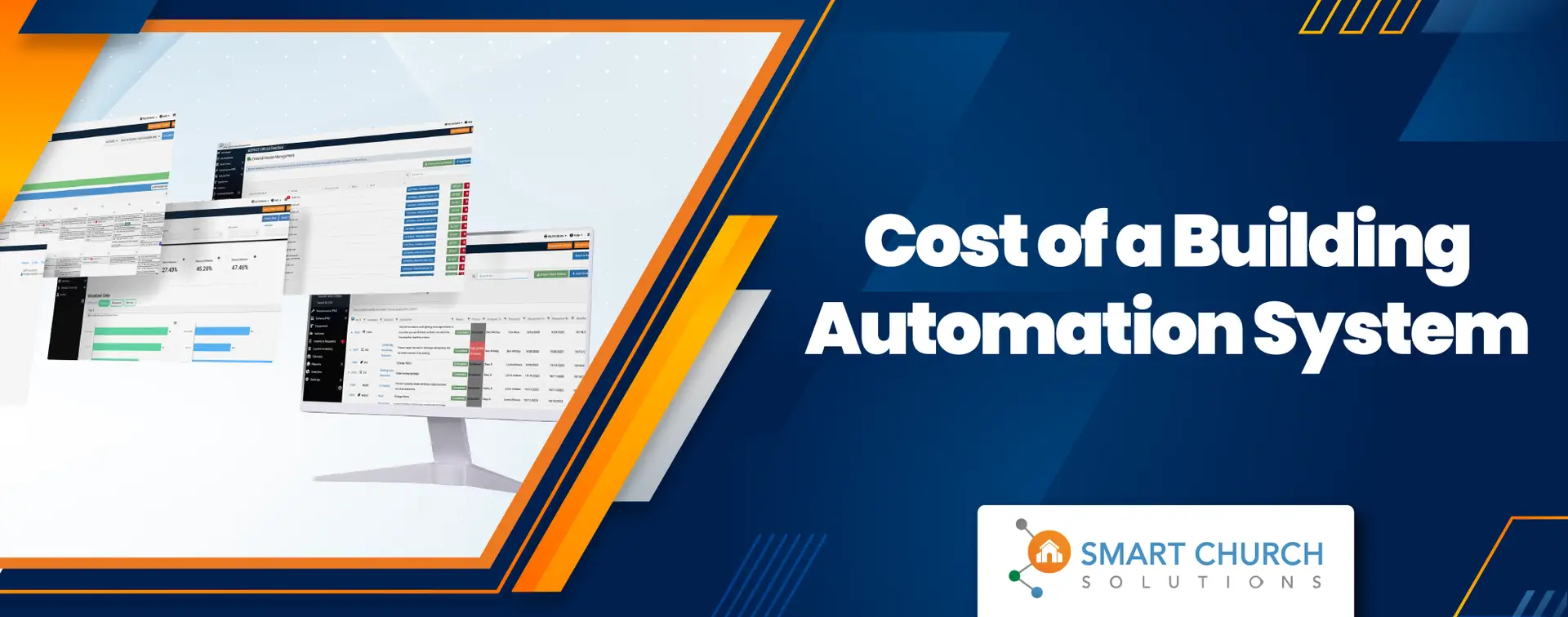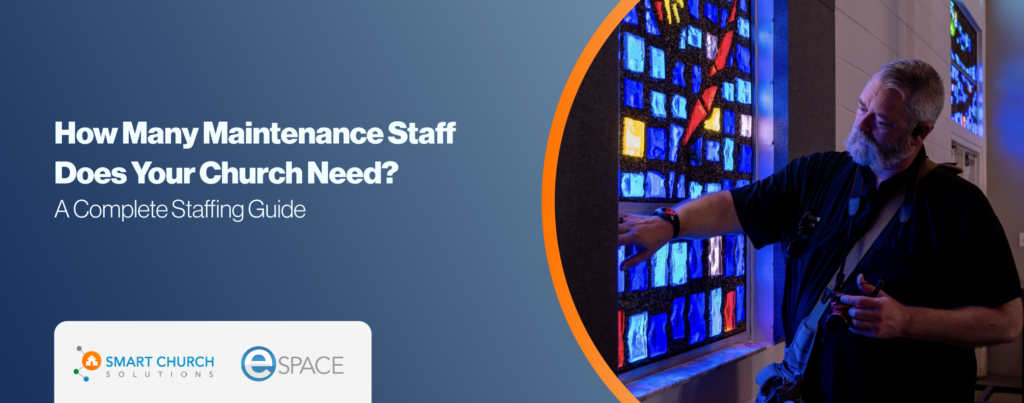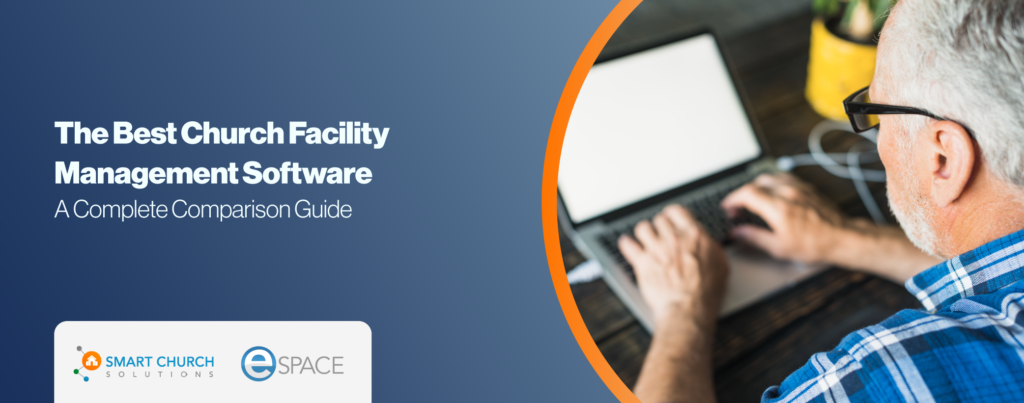The concept of building automation systems (BAS) may sound complex or intimidating, especially when it comes to implementing one in a church. However, by leveraging a system like eSPACE, church facilities can automate essential functions like HVAC, lighting, and even door locks, creating a more efficient, cost-effective environment for ministry.
Why Churches Need Automation Systems
In today’s world, where smartphones and smart homes are the norm, churches, too, can benefit from embracing smart technology. A church facility automation system like eSPACE enables churches to replace manual processes with technology that can perform tasks better and at a lower cost. Whether it’s automatically turning on HVAC systems based on event schedules or managing digital signage to display event information, automation allows churches to operate more efficiently.
Common Church Facility Automation Features:
- HVAC automation: Heating and cooling systems adjust based on event schedules.
- Automated door locking/unlocking: Doors lock and unlock automatically at specific times.
- Digital signage integration: Signs throughout the church display real-time event information.
- Future additions: Preventative maintenance sensors and lighting automation.
The Real Cost of Church Automation
A key consideration for churches is the cost associated with installing an automated system. For many, “automation” might evoke thoughts of expensive, futuristic technology, but automation doesn’t have to break the bank. Here’s a breakdown of potential costs and options.
1. Existing Building Automation Systems (BAS)
If your church has already invested in a building automation system, particularly one equipped with a JACE (Java Application Control Engine) or native BACnet (Building Automation Control Network), then integrating eSPACE is relatively straightforward.
- Cost: $3,500 to $5,000 for the necessary components and programming. These fees include the costs for the necessary equipment to communicate with eSPACE and the fee for your local controls contractor to install it.
2. Thermostat-Based Systems
Suppose your church is not equipped with a full-fledged BAS but uses traditional thermostats to control heating and cooling. In that case, you can still create an automated system by replacing current thermostats with communicating thermostats.
- Cost: $300 to $400 per thermostat, plus additional fees for communication gateways and other necessary devices. For a church with 30 thermostats, the total cost could be around $10,000.
While the upfront costs might seem high, this investment often saves time and resources immediately. Facilities managers no longer need to manually adjust HVAC systems, freeing them to focus on more critical tasks.
How Automation Saves Churches Money
When evaluating the cost of an automated church system, it’s crucial to consider the long-term savings that automation provides in both energy and labor costs.
1. Energy Efficiency
Automating HVAC systems can lead to significant energy savings. By only operating HVAC systems during scheduled events, churches avoid wasting energy by running systems unnecessarily. Churches that have integrated HVAC automation through eSPACE have reported energy savings ranging from 1% to 25%.
2. Operational Efficiency
The most significant savings often come from operational efficiency. Automating routine tasks—like setting HVAC schedules or locking doors—frees up your staff’s time. This can lead to a dramatic increase in productivity. For example, one church facilities manager reported saving up to six hours weekly using automated HVAC scheduling systems.
Reducing the time staff spends on routine tasks allows churches to expand the square footage each staff member can manage. While a typical ratio is one facility technician per 35,000 square feet, automation can help increase that number to 1 per 50,000 or even 1 per 75,000 square feet.
3. Extended Equipment Lifespan
Automation also helps extend the lifespan of expensive equipment, such as HVAC units. By only running systems when necessary, you reduce wear and tear, which can extend the life of equipment by several years. For example, an HVAC system expected to last 15 years might last an extra 2-3 years with proper automation and maintenance, saving the church tens of thousands of dollars in replacement costs.
Protect your facility with routine inspections. Extending the life of your HVAC and other systems starts with regular checkups. 📋Download the Periodic Site Assessment Checklist: A tailored guide to help your church identify maintenance needs and prevent costly surprises.
4. Cost-Efficient Communication
Digital signage enhances communication and provides cost savings by reducing the need for printed materials and minimizing staff time spent on manual updates. With eSPACE, digital signage can be automated to display up-to-date information like event schedules and wayfinding details, ensuring that messages are consistently current without requiring staff intervention.
This approach can significantly reduce the costs associated with printed signage, which needs frequent replacement and updating. Additionally, automating digital signage reduces the workload on staff who would otherwise be responsible for manually updating signs. This frees them to focus on more valuable tasks, enhancing operational efficiency. By streamlining communication through automated digital signage, churches can create a more engaging experience for visitors while also achieving cost savings in terms of both materials and labor.
Calculating the Return on Investment (ROI)
The ROI of an automated system compared to hiring additional staff is clear. While setting up an automation system is a one-time expense, hiring a staff member is an ongoing cost. A building automation system can perform tasks that would otherwise require full-time staff, all while operating 24/7 and without needing rest or breaks.
Automation frees staff to focus on more complex tasks that require human decision-making, increasing overall productivity. The ROI is measured in energy savings and the ability to do more with the same number of people.
Imagine automating HVAC, door locks, and more—freeing your team for ministry. Book a free call with an expert to learn how eSPACE can make automation a reality for your church.
What About the Future?
As technology continues to evolve, so will church automation systems. eSPACE is continuously expanding its capabilities, and future features will include preventative maintenance sensors and even more IoT integrations.
The flexibility of eSPACE allows churches to start small—perhaps by automating just their HVAC system—and gradually expand their automation capabilities over time. This means churches can grow their automation systems alongside their budgets and needs.
Conclusion
Implementing an automated church system might seem like a significant investment upfront, but the long-term savings in energy, labor, and equipment lifespan far outweigh the initial cost. Whether your church is small or large, eSPACE provides scalable automation solutions that reduce operational costs while increasing efficiency.
Bottom Line: By using eSPACE as the central hub for automation, churches can enjoy the benefits of a cost-effective, scalable solution that grows with their facility needs. The real question is: can your church afford not to invest in automation?







